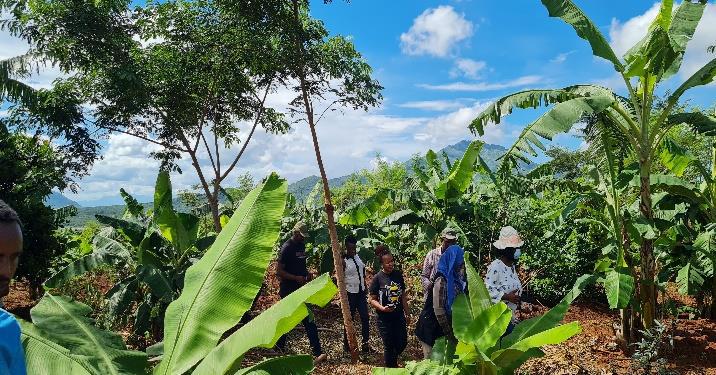Across Africa and Asia, new incentive programmes and digital tools are laying the ground for the large-scale deployment of trees in rural landscapes – particularly among the smallholder farmers that produce a third of our planet’s food. Such efforts hold significant sway on our ability to meet global climate, land, and biodiversity goals.
At a COP28 event organized by the Center for International Forestry Research and World Agroforestry (CIFOR-ICRAF) and its partner Ashoka Trust for Research Ecology and the Environment (ATREE), speakers from Kenya, The Gambia, Cameroon, and India explained how agroforestry is restoring vast swathes of land while improving the livelihoods of smallholders. They also shared how new digital tools and incentives schemes could take those systems to the next level—especially in Africa and Asia, which represent 80 percent of the global population.
“Nearly nine percent of national climate plans mention agroforestry, but policy, technical, and financial barriers still constrain its uptake, especially in developing countries,” said CIFOR-ICRAF CEO Éliane Ubalijoro, who underscored the need to scale it up as a cost-effective, integrated solution to the crises triggered by unsustainable land use.
Agroforestry, which supports more than 1.2 billion people globally, builds soil health, contributes to carbon sequestration, and promotes avoided deforestation and land degradation. And although it is an age-old practice, heeding science—together with local knowledge—is important to realize its potential.
New tools for better decisions
India was a pioneer in implementing a national agroforestry policy, but the low uptake on the ground led researchers to reckon with the obstacles to broader adoption, in particular by small holders. Since 2021, an initiative from the government, in partnership with a consortium led by CIFOR-ICRAF, is working out the best strategies to boost agroforestry for more resilient livelihoods and ecosystems.
The Trees Outside Forests in India (TOFI) initiative identified the top three barriers to uptake: water constraints—India is one of the most water-stressed countries in the world; lack of transition finance to incentivize farmers while they wait for seedlings to grow; and a poor selection of tree species, alongside low-quality planting material.
Now, they are working on digital tools to assess the water-carbon tradeoff—vital to avoid planting more trees than water resources can support— and to guide decisions about land restoration. By inputting data about the location, site conditions, and restoration objectives, the system provides guidance on issues like what species should be planted and at which density.
“Providing farmers with a tool they can use to decide what is appropriate for their land and what is going to give them good results is a way of enabling smallholder tree farming,” said Anuja Malhotra, who participates in the initiative as policy manager at the Centre for Policy Design within the Ashoka Trust for Research for Ecology and the Environment (ATREE). According to Malhotra, these and other tools, like an annual biodiversity index under development, could potentially inform payments for ecosystem services to help farmers transition into agroforestry systems.
Big data analytics and artificial intelligence can also open new avenues for advancing the agroforestry agenda around the world, pointed out CIFOR-ICRAF India country director Chandrashekhar Biradar, who is also chief of party for the TOFI Initiative.
And for large-scale tree planting projects, the director of ATREE’s Centre for Policy Design, Abi Tamim Vanak, emphasized it is all about getting the right species in the right places—and for the right reasons. Among his pieces of advice: use water budgeting tools like the one developed by TOFI to avoid depleting water resources; use fast-growing, native pioneer species for the initial stages of land restoration; and work to understand local land use systems and user groups.
“Design for equity, keeping all stakeholders in mind, and mitigate risks to the most vulnerable,” said Vanak. “For tree-planting initiatives to succeed in the long term, local communities need to see benefits accruing directly to them.”

